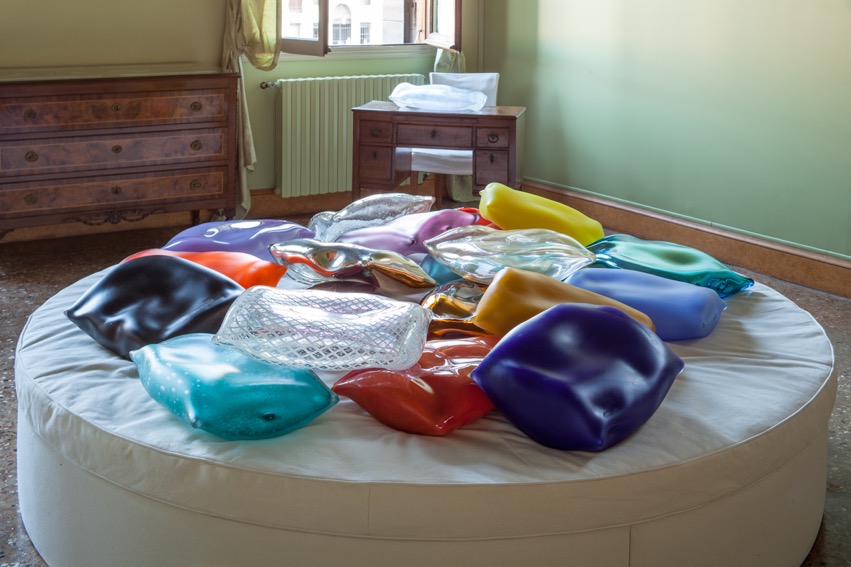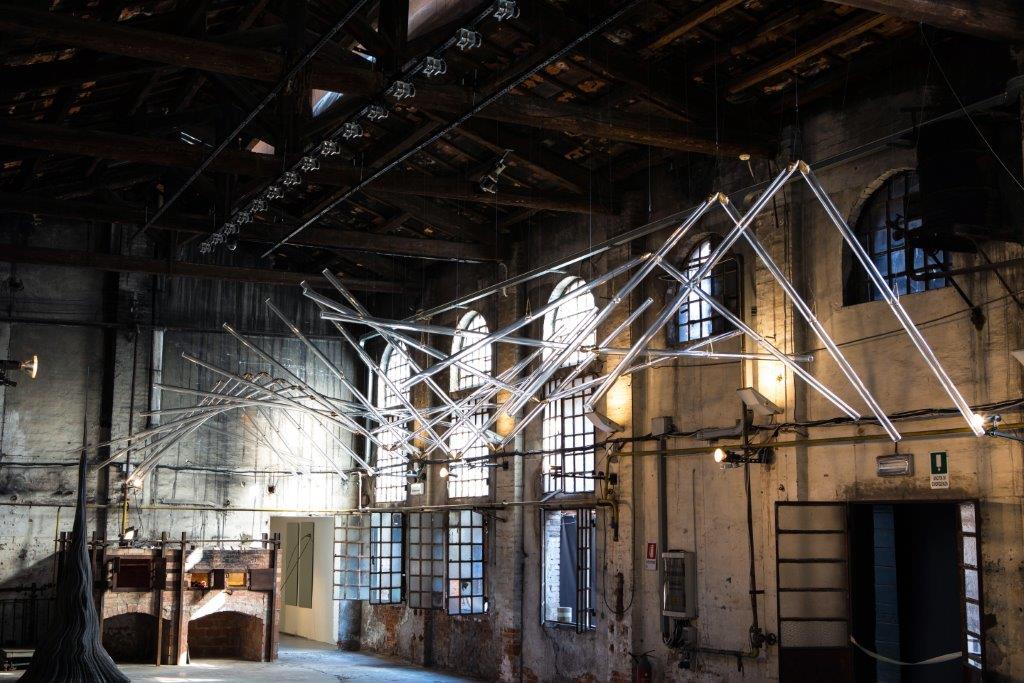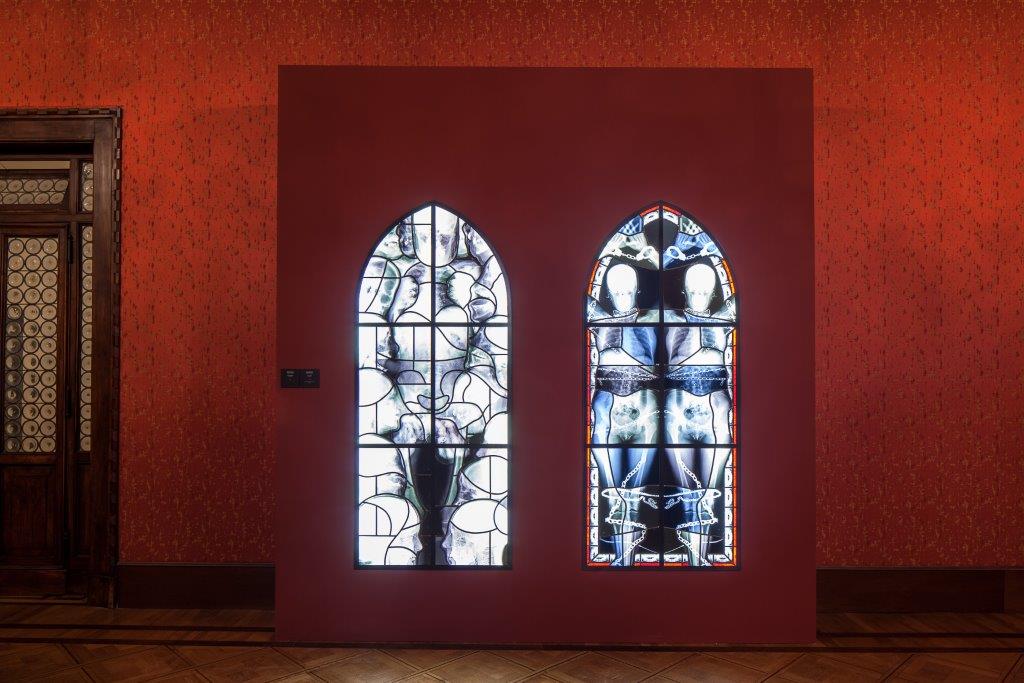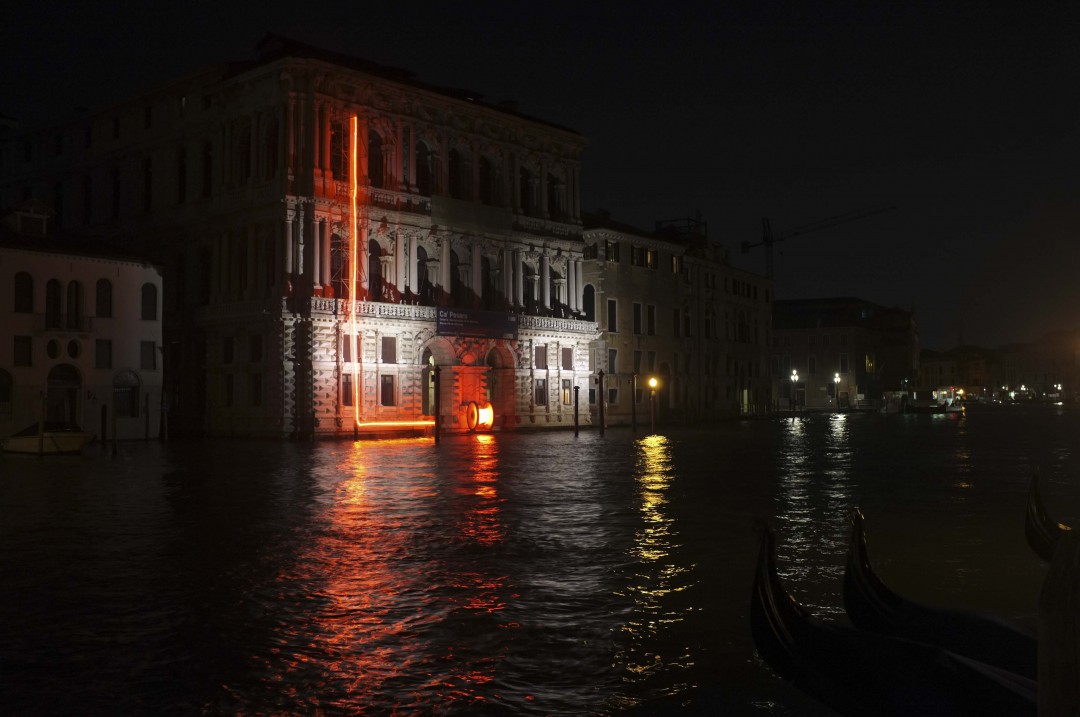Once more art lovers of the world are crossing the blue lagunas between the little islands of Venice to see the 56th version of the Biennale which offers a cornucopia of contemporary international art.
The curator, Nigerian-born Okwui Enwezor, chose the title: ”All the World’s Future”. A sombre picture is drawn of our age with its crises, conflicts, humanitarian disasters, and uncontrolled capitalism. In many pavilions the art works treat weighty cases such as North African refugees, the conflict in Syria, or all kinds of activism.
This colossal exhibition covers not only a number of national pavilions, halls, and gardens in the Giardini and Arsenale areas, but fills up the entire city with the Collateral Events. These too, question the identity-shaping phenomena of the times, post-colonial history writing and its cultural potential, while some imply a strong appeal to handle the environment with care. As most works testify, contemporary art has become a global phenomenon embracing much more than a white, middleclass point of view.

Judi Harvest (USA): Installation Room of Dreams, 2015, 18 blown and sculpted glass pillows, photo: Artist Archive, 56th Biennale Venice
The present text is focused on glass, either as a visually powerful element in a multimedia total-installation or as the main subject of a thematic exhibition.
Through a labyrinth of winding alleys and little bridges across the canals I wandered along the Canale Grande, exploring glass installations hidden in the beautiful palaces. Palazzo Tiepolo Passi, which is still the home of the aristocratic family, hosts site-specific installations by Judi Harvest and Silvano Rubino, two artists who have worked with glass throughout their careers. Judi found inspiration in the palace’s bedroom where she placed a number of free-hand blown cushions of different shapes, sizes, and colours. Cushions are with us from day one until the very end and imply associations to rest and dream. Silvano transformed a number of unexpected objects from the livingrooom into glass and had them interact with the original furniture, carpets, wallpapers and curtains.
The glass material is an integral part of the work of internationally recognized pioneer of conceptual art Frederica Marangoni, who used it together with neon and moving images in her artistic production back in the 1970s. A thread of light in red cracked neon cuts brutally across the white marble façade of Ca´ Pesaro from the roof almost down to the water, where it encounters a technological Venus, a gigantic spool made from a slender and ephemeral plate of glass around whose axis it winds. “The leading tread” installation continues into the Museum’s interior where it becomes blood, running through a mass of barbed wire symbolizing the drama of humanity and a sign “It is not a good day to be human” appears behind a beggar.

Lonneke Gordjin & Ralf Nauta (Studio Drift, Holland) : 20 steps, 2015, 12 m long kinetic sculpture, installed at furnace of Berengo studio at Murano, 40 glasstubes and robotic mechanism, photo: Drift´s archive
Nearby, the Vitraria Glass + A Museum opened in the Palazzo Nani Mocenigo. ”From Pablo Picasso to Jeff Koons” shows a collection of unique jewellery designed by distinguished artists. On the ground floor and even in the glass shop there are two decorations of quality in blown glass and pâte de verre by the Slovenian artist Tanja Pak. Glass jewellery and pictures in reverse glass painting are presented in the newly opened Catarina Tognon Galleria. They are created by the Dutch artist Mieke Groot who calls her exhibition “Project Dakar”. During her many visits to Senegal she was inspired by the long tradition of reverse glass painting found there. In accordance with this, she uses religious motifs as well as photos adding painted animals and flowers around the Picture.

Wim Delvoye (Belgium): Calliope, 2001 – 2002, stained glass, „Glasstress 2015 Gotika“, Palzzo Franchetti, photo: Francesco Allegretto
Next stop on my glass tour was Martinuzi glass shop and –gallery at Piazza San Marco. Here Massimo Lunardon presents an installation “Inundo”, which comprises the iconographic symbols of Venice emerging from the waters murky. The message is to call proper attention to the phenomenon of Acque Alte –floods, which put a strain on a world heritage site. Then I got on the vaporetto to the San Giorgo Maggiore Island. After a quick look at Jaume Plensa’s installation in the basilica, with dreamlike, oversized alabaster heads of women, I headed for Le Stanze del Vetro. In previous years, ”Stanze” has staged a number of significant exhibitions promoting contemporary and historical art within the field of glass-making. The present “Glass from Finland” exhibition is based on loans of extraordinary glass pieces from the eminent Bischofberger collection. It shows masterpieces by leading 20th century designers like A. Alto, T. Wirkkala, K. Frank, T. Sarpaneva, O. Toikka.
Although most works have become icons of design, we now get a chance to study varieties and experiments leading to the final results. The sculptural qualities of many works are fascinating, as is the obvious inspiration from scenery, ice and water, mirrored in the organic shapes. In the nearby tusculum (a garden with water and a “Glass Tea House Mondrian”) I leafed through the comprehensive catalogue, which was published for the occasion. The project is backed by Hiroshi Sugimoto, and the stringent form of the tea house refers to Mondrian’s abstract shapes.
Close to Accademia Bridge, the impressive Palazzo Franchetti, built in Venetian gothic style, is host to the exhibition “Glasstress” for the fourth time. This year the subject is “Gotika” and is the result of the joint efforts of Berengo Foundation and The State Hermitage Museum of St. Petersburg. Historical works from the Hermitage collection are presented in dialogue with newly commissioned pieces made in glass by more than 50 invited artists, incl. stars like Jake & Dinos Chapman, Olafur Eliasson and Jaume Plensa. All the projects refer directly or indirectly to the Gothic style –be it elements of architecture, crafts etc. or mythology, religious themes, alchemy and other spiritual topics. As the curators say: “ the Gothic style was the first international style, the common language and modus vivendi of many nations for at least four centuries. In like fashion, contemporary art has become the global style, the “biblia pauperum”, understood today from Europe to America, from North Africa to Japan”.
To see the second part of the Glasstress exhibition, I went to the glass cradle of Venice, the Murano island. Thanks to Adriano Berengo´s decade-long efforts to protect and enhance the traditions of glassmaking here, an old manufactory was converted to an exhibition hall. Many site-specific multimedia installations stress the genius loci – e.g. the unusual special kinetic installation by Dutch studio Drift, which is placed below the ceiling, next to the enormous glass furnace. At the Murano Glass Museum close by, not only the thousand-year-old tradition of glassmaking is shown. In the recently opened new wing, the life-work of Murano´s Maestro, Luciano Vistosi, is presented. An impressive set-up focuses on his blown black and white, light-filled sculptures. Rounded, sinuous shapes appeal to the changing play of light and the tactile qualities. In the other wing a travelling exhibition European Glass Experience of almost 80 young European artists is displayed. Here too, the works with particular metaphorical and stylistic qualities have proven that glass is a challenging medium with almost endless potential for artistic expression.
Pavla Rossini, PhD. Freelance curator and art journalist in Copenhagen and Prague
Translated from Danish into English by Lene Kyster
Federica Marangoni (Italy): part of the multimedia installation „The leading thread“, 2015, Ca‘ Pescaro, VENICE, photo: Carlo Biasia

